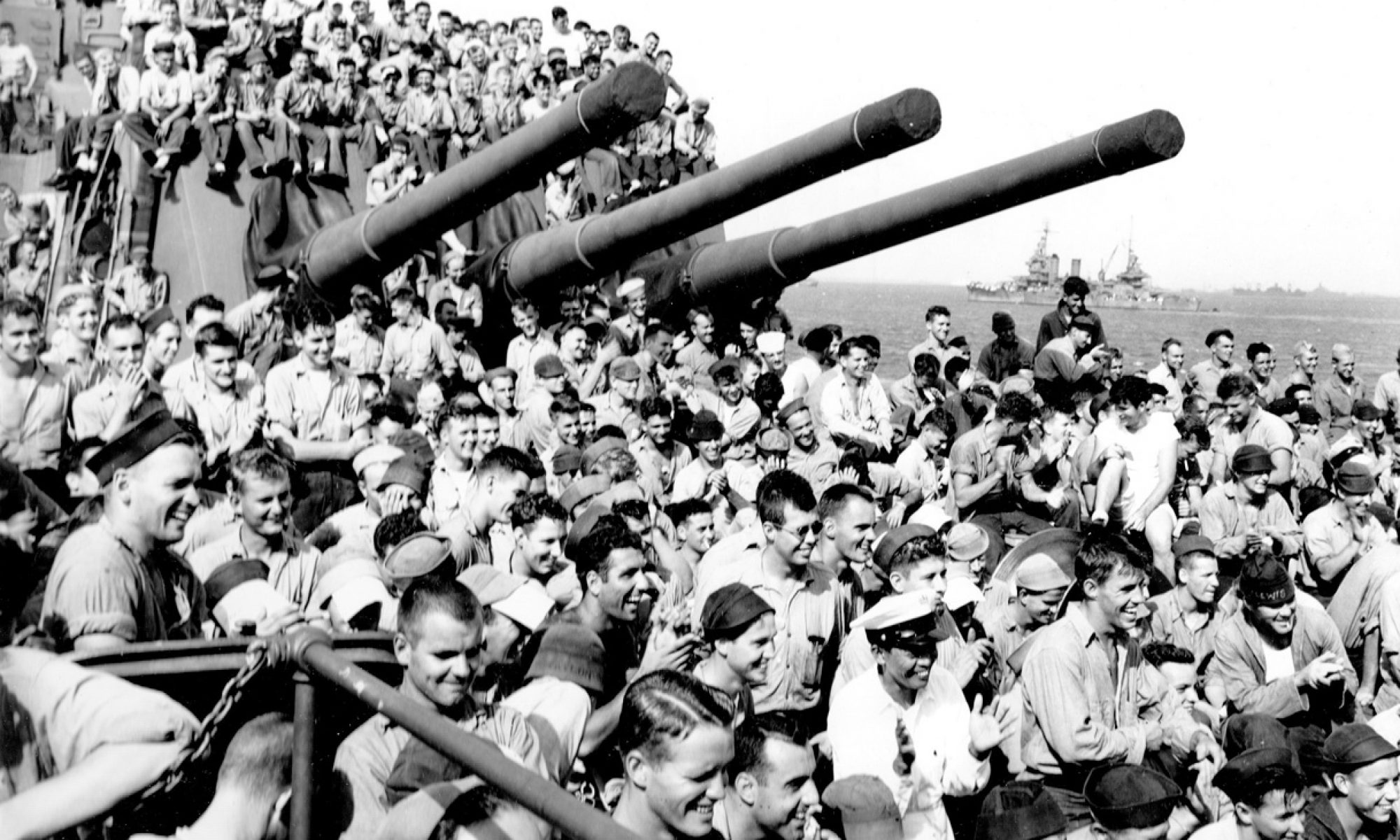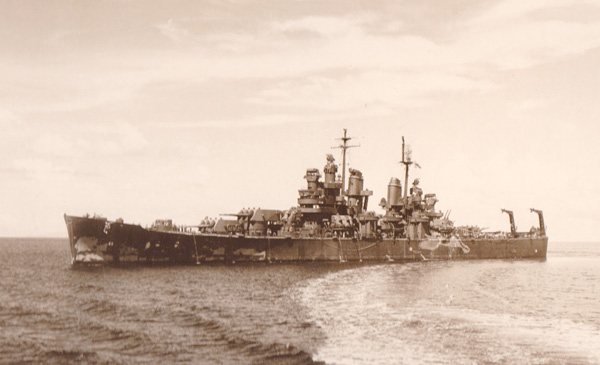1-24-16
In early January 1945, the ships of Task Force 38 were not quite done with the Philippines yet. They spent much of the early part of the month bombarding Formosa and other targets. On Jan 9, the Task Force headed into the South China Sea. Halsey believed the bulk of what was left of the IJ Navy was anchored near French Indo China (Vietnam). On the 11th, the Boston joined up with some ships from TG38.2, and formed a Bombardment Group consisting of: 2 battleships (New Jersey and Wisconsin), 2 heavy cruisers (Boston & Baltimore), 4 lights cruisers (Wilkes Barre, San Juan, Pasadena and Seattle), screened by 26 destroyers – all screening the carriers Enterprise, Lexington, Essex, Hancock and Independence. The Japanese fleet was gone, but this group struck and shelled Saigon, Canton and HongKong, before returning to further attack Formosa. This was all part of the lead-up to the Iwo Jima Invasion.
Frank Studenski’s account of January 21, 1945: This morning planes took off to hit Formosa, so far everything has been pretty quiet. About 0900 hours torpedo defense sounded, some bogies were reported in the area, we were at battle stations for about one hour. Several planes were shot down during the day by our fighters. Task Force 38.2 was the hardest hit, the Langley took a bomb hit on her flight deck and the Ticonderoga’s air defense was wiped out and her main battery put out of commission. One destroyer was badly strafed. Of the 17 planes that came in, 13 of them were shot down. About 1730 hours torpedo defense was again sounded, but no planes came in. We secured one hour later. During sunset torpedo defense planes were reported all around us. But our night fighters kept them at a distance. Around 2000 hours we had an alert, but everything was quiet soon after. A plane’s engine could be heard, which did not sound like a Hellcat fighter or Avenger bomber. It flew right over us at low altitude and could be clearly seen. It had two engines, which of course was a Jap plane, because we did not have any twin engine planes in the area. After he flew over us he swooped down and dropped a fish, he was trying to hit the carrier Cabot. We immediately opened fire. We were the only ship firing. He got over to our port quarter and then the five inch opened fire and then the 40mm batteries opened fire. He was quickly hit and he was a ball of flames and hit the water. The other ships started firing, but we had already hit him. Several other bogies were reported in the area. This plane was a twin engine “Irving.” We secured from general quarters about 2100 hours. Tonight we are heading for Okinawa Islands.
(Just in case you though it was dull and boring out there . . . . Steve)

